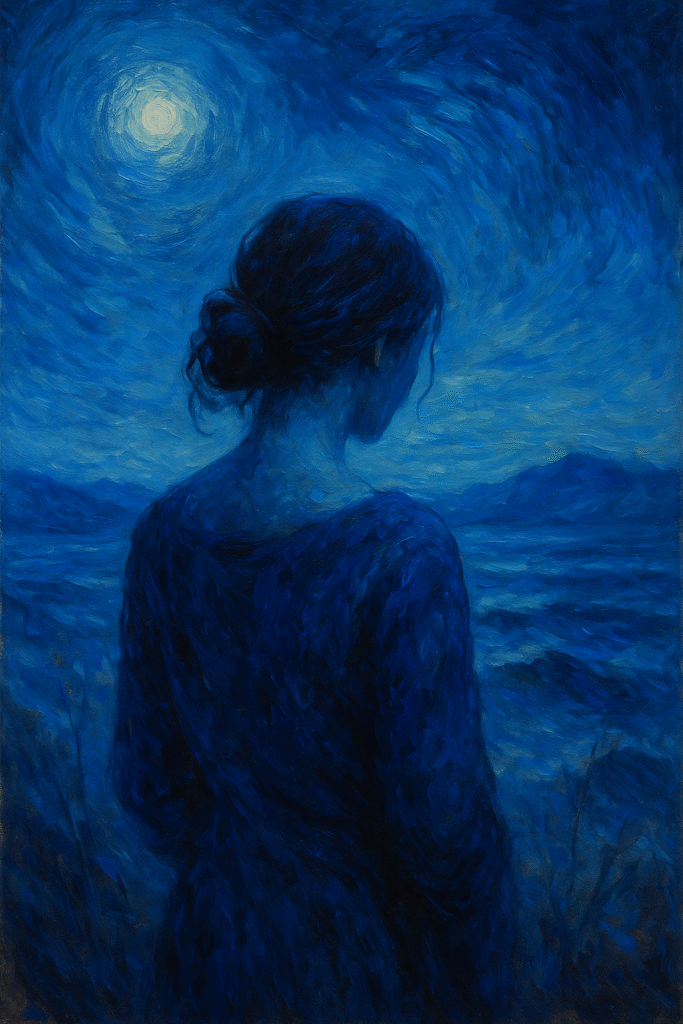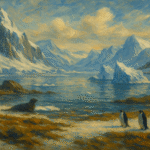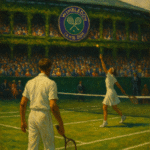Introduction
Blue in art symbolizes a spectrum of meanings, from royalty to melancholy. It transcends aesthetics to evoke emotions, signify status, and narrate stories. This guide explores blue’s profound significance across historical and contemporary contexts, inviting audiences to a deeper understanding of its artistic roles and emotional impacts.
The Evolution of Blue: Historical Context and Symbolism
Blue is historically linked to prestige and spirituality. Ancient Egyptians utilized blue stones like lapis lazuli to personify divinity. Renaissance artists, funded by wealthy patrons, utilized ultramarine—a costly pigment—highlighting blue’s association with wealth and purity. Artists such as Van Gogh and Picasso redefined blue, using it to express human emotion and existential themes.
| Era | Significant Use of Blue | Symbolic Meaning |
|---|---|---|
| Ancient Egypt | Lapis Lazuli in Art | Divinity and Protection |
| Renaissance | Ultramarine Pigment | Wealth and Purity |
| Van Gogh & Picasso | Blue Periods | Melancholy and Depth |
Understanding Blue: The Psychological Impact of the Color
Blue evokes emotions ranging from tranquility to melancholy. According to a study in the _Journal of Color Research and Application_, blue hues can soothe the mind or evoke deep introspection, influencing how viewers perceive art. Artists deliberately apply varying intensities of blue to guide emotional responses.
The Emotional Spectrum of Blue
Blue’s emotional impact includes:
* Tranquility: Soft blues, like sky blue, induce calmness.
* Melancholy: Dark blues, such as navy, evoke introspection and sadness.
* Inspiration: Vibrant blues can stimulate creativity and focus.
Blue in Contemporary Art: Trends and Transformations
In 2023, blue continues to dominate modern art, reflecting cultural zeitgeists. From graffiti to digital media, artists like Banksy employ blue to critique modern society or express environmental concerns. Contemporary art celebrates blue’s versatility in both physical and digital spaces, showcasing innovative uses and symbolism.
Artistic Color Trends in 2023
1. Digital Installations: Blue in immersive virtual art experiences.
2. Environmental Art: Blue symbolizes water’s importance amid climate discourse.
3. Street Art: Blue’s vibrancy used to engage public attention and elicit emotional responses.
Color Symbolism Trends: From Tradition to Innovation
Blue’s meanings in art continually evolve with cultural shifts. National Endowment for the Arts highlights blue’s popularity in modern color palettes. Its symbolism traverses innovation, sustainability, and nostalgia, influencing how it merges traditional sentiments with modernity.
Case Studies: Blue in Famous Paintings
Starry Night: The Melancholy of Blue
Vincent van Gogh’s _Starry Night_ exemplifies blue’s emotional depth. He employs swirling blues and contrasting yellows to portray tumultuous tranquility, reflecting personal struggles. The painting’s blue hues capture celestial beauty, fostering a sense of wonder and introspection.
Picasso’s Blue Period: Art Meets Emotion
Picasso’s Blue Period, a profound portrayal of human despair and isolation, elevates blue beyond a mere color to a powerful narrative tool. With muted tones, Picasso channels deep emotional resonance, reflecting his life’s adversities.
Your Journey with Blue: Embracing Its Meanings in Your Art
As an artist or enthusiast, incorporating blue’s diverse meanings enhances your work’s emotional depth. Consider blue’s historical and cultural contexts when selecting shades. Engage with blue:
* Experimentally: Mix blues to express unique moods.
* Mindfully: Use blue to underscore themes of calmness or contemplation.
* Contextually: Align blue hues with intended audience emotions.
Conclusion
Embark on an artistic journey with blue, immersing yourself in its timeless stories and emotions. Let the depth of blue enhance your creativity, fostering connections through shared artistic experiences.
Call to Action
Connect with us at Noetik Blog to explore more Subscribe for daily updates enriched with inner wisdom, creativity and transformative insights into art and and conscious curiosity!
—


